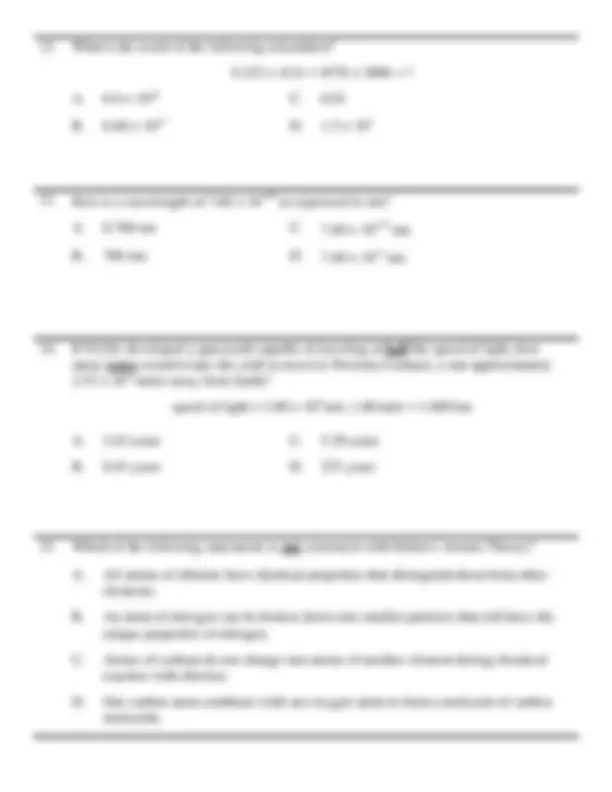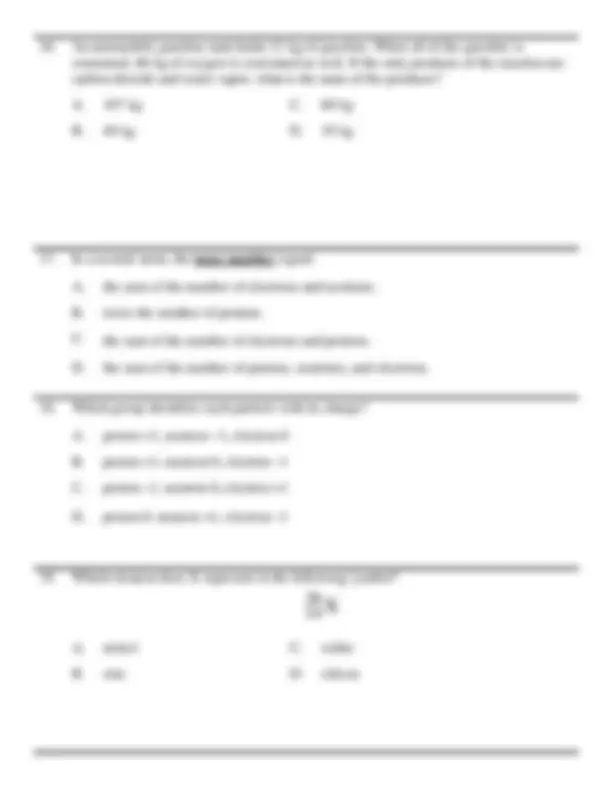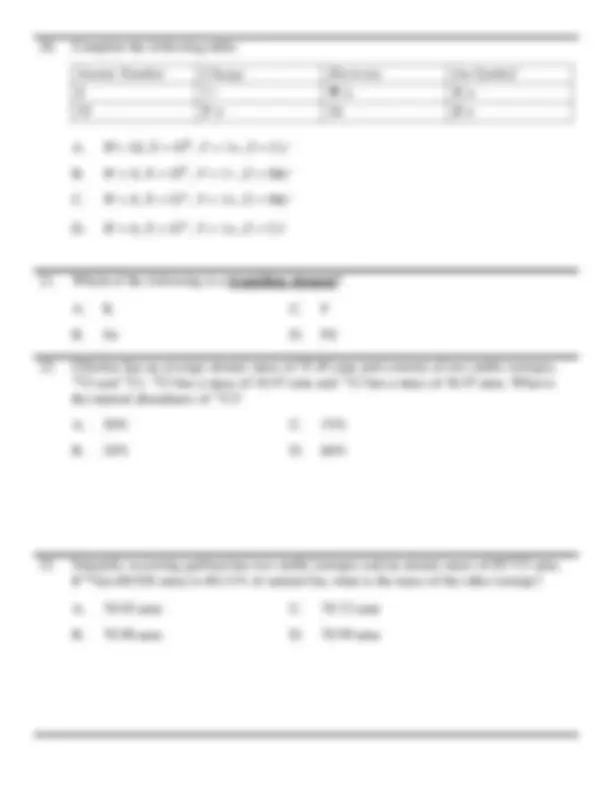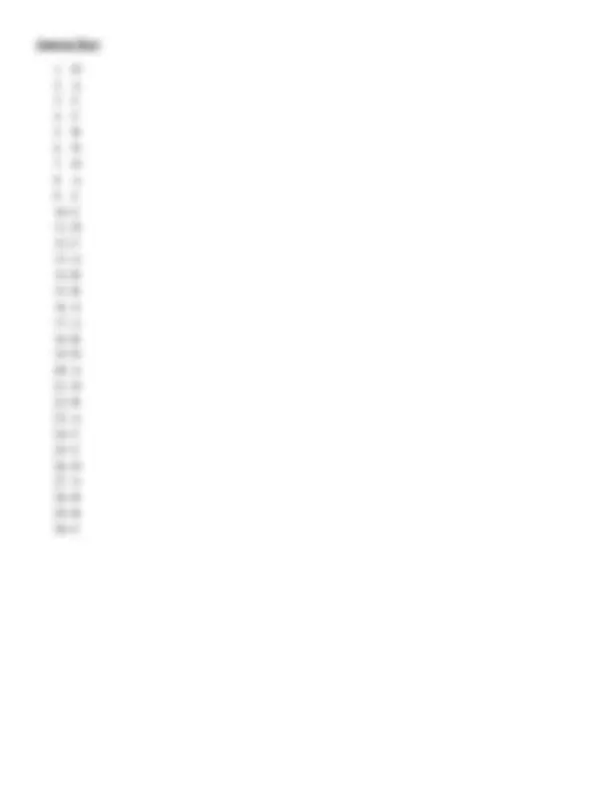






Study with the several resources on Docsity

Earn points by helping other students or get them with a premium plan


Prepare for your exams
Study with the several resources on Docsity

Earn points to download
Earn points by helping other students or get them with a premium plan
Community
Ask the community for help and clear up your study doubts
Discover the best universities in your country according to Docsity users
Free resources
Download our free guides on studying techniques, anxiety management strategies, and thesis advice from Docsity tutors
30 multiple choice questions related to chemistry, covering topics such as states of matter, properties of substances, atomic theory, and isotopes. Each question has a single correct answer.
Typology: Lecture notes
1 / 8

This page cannot be seen from the preview
Don't miss anything!





A. oxygen C. salt
B. copper D. mercury
A. water C. 2% milk
B. wet sand D. sweet tea
A. magnesium C. nickel(II) sulfide
B. oxygen D. helium
A. the oxidation of methanol (CH 3 OH) to formaldehyde (CH 2 O) upon ingestion
B. the rusting of iron to form iron oxide
C. the distillation of ethanol (CH 3 CH 2 OH) from a mixture of ethanol and water
D. the combustion of gasoline producing water and carbon dioxide
A. always conserved.
B. the energy associated with the temperature of an object.
C. the energy associated with the position of an object.
D. associated with the effect of gravity of an object.
(1×10–^13 ) ÷ (1×10–^4 ) =
A. milli C. mega
B. micro D. nano
A. 10 6.776^ C. 6.77600 × 10–^5
B. 6.77600× 10–^3 D. 6.776 × 10^5
A. 1.91 cm C. 3.19 cm
B. 4.48 cm D. 7.89 cm
A. 1.38 g/mL C. 12.4 g/mL
B. 8.08 g/mL D. 18.1 g/mL
A. mass C. density
B. volume D. weight
A. 107 kg C. 60 kg
B. 44 kg D. 18 kg
A. the sum of the number of electrons and neutrons.
B. twice the number of protons.
C. (^) the sum of the number of electrons and protons.
D. the sum of the number of protons, neutrons, and electrons.
A. proton +1, neutron – 1, electron 0
B. proton +1, neutron 0, electron – 1
C. proton – 1, neutron 0, electron +
D. proton 0, neutron +1, electron – 1
A. nickel C. sulfur
B. zinc D. silicon
Atomic Number Charge Electrons Ion Symbol 8 2− W = X = 55 Y = 54 Z =
A. W= 10, X = O2−, Y = 1+, Z = Cs+
B. W = 8, X = O2−, Y = 1−, Z = Mn+
C. W = 8, X = O2+, Y = 1+, Z = Mn+
D. W = 6, X = O2+, Y = 1+, Z = Cs+
A. K C. F
B. Sn D. Pd
A. 50% C. 33%
B. 24% D. 66%
A. 70.92 amu C. 70. 72 amu
B. 70.96 amu D. 70.99 amu
A. LiCl C. PCl 3
B. NO 2 D. CF 4
A. NaClO 2 C. Na 2 CrO 4
B. NaClO D. NaHCO 3
A. carbon sulfide C. dicesium
B. carbon disulfide D. carbon(IV) sulfide
A. The number of protons equals the number of electrons.
B. The number of protons is larger than the number of electrons.
C. The number of neutrons equals the number of electrons.
D. The sum of the number of protons, neutrons, and electrons equals 19.
Answer Key :